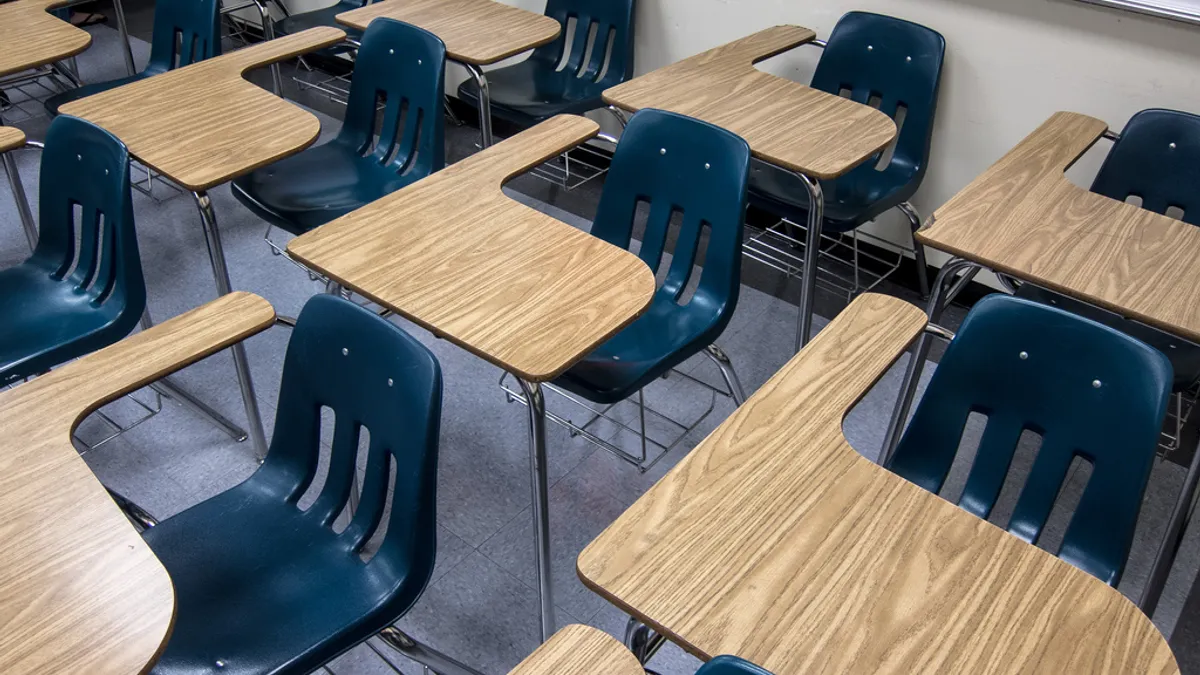Dive Brief:
- Oklahoma issued emergency teaching licenses to allow the hiring of 3,038 nonaccredited teachers in the 2018-19 school year, a 54% increase over the previous year, the Shawnee News-Star reports. And with more than 800 emergency certifications issued last week, that number is expected to rise again this school year.
- In the past six years, roughly 30,000 of teachers have left the profession in Oklahoma, according to a report issued by the state earlier this year. In times of teacher shortages, nonaccredited teaching certificates issued in the state allow teachers to work in a classroom for up to two years while they continue pursuing credentials, an effort that is largely left up to school districts to oversee.
- Shawn Hime, executive director of the Oklahoma State School Boards Association, said the increase in emergency licenses indicates the state is facing a teacher shortage crisis, but added that he is encouraged to see school districts are paying teachers more money and hiring more new teachers.
Dive Insight:
Recruiting and retaining new teachers continues to be a top priority for many school districts. These shortages are not generalized in nature and tend to impact some communities and subject areas more than others. While there is an oversupply of elementary teachers, finding them for secondary level STEM subjects is more of challenge.
Rural communities also face different challenges than urban and suburban areas when it comes to recruiting and retaining teachers, given that the latter are often more attractive to up-and-coming teachers in particular. The issue is important not only because of the effort involved in finding and attracting new teachers, but because of the additional cost high teacher turnover imposes on a school district.
While the issue is complex, the main reasons for the struggle to recruit and retain teachers seem to boil down to levels of respect for the profession, pay and stressful working conditions. According to a recent PDK poll, 54% of parents say they would not favor their child choosing a career as a public school teacher.
And while salaries have increased in many states in recent years, these salaries are still lower than they were when inflation is factored in, according to U.S. News and World Report. The challenging work environment many teachers in low-performing schools face also affects recruitment and retention, especially when teachers are not adequately prepared for these classroom realities.
States and school districts are facing the need to be creative in meeting these challenges, and offering alternative credentialing pathways is one option. Some states are re-examining their certification requirements to see if the barriers to obtaining them are unreasonable. Many, like Oklahoma, are also allowing for emergency certifications while teachers complete certification requirements. Teacher residency programs are also a growing trend, as they allow prospective teachers to work alongside more experienced teachers as they adapt to the classroom and work on completing their credential requirements.
Offering these increased levels of support is one of several options recommended by the Learning Policy Institute for improving recruitment and retention.







 Dive Awards
Dive Awards




